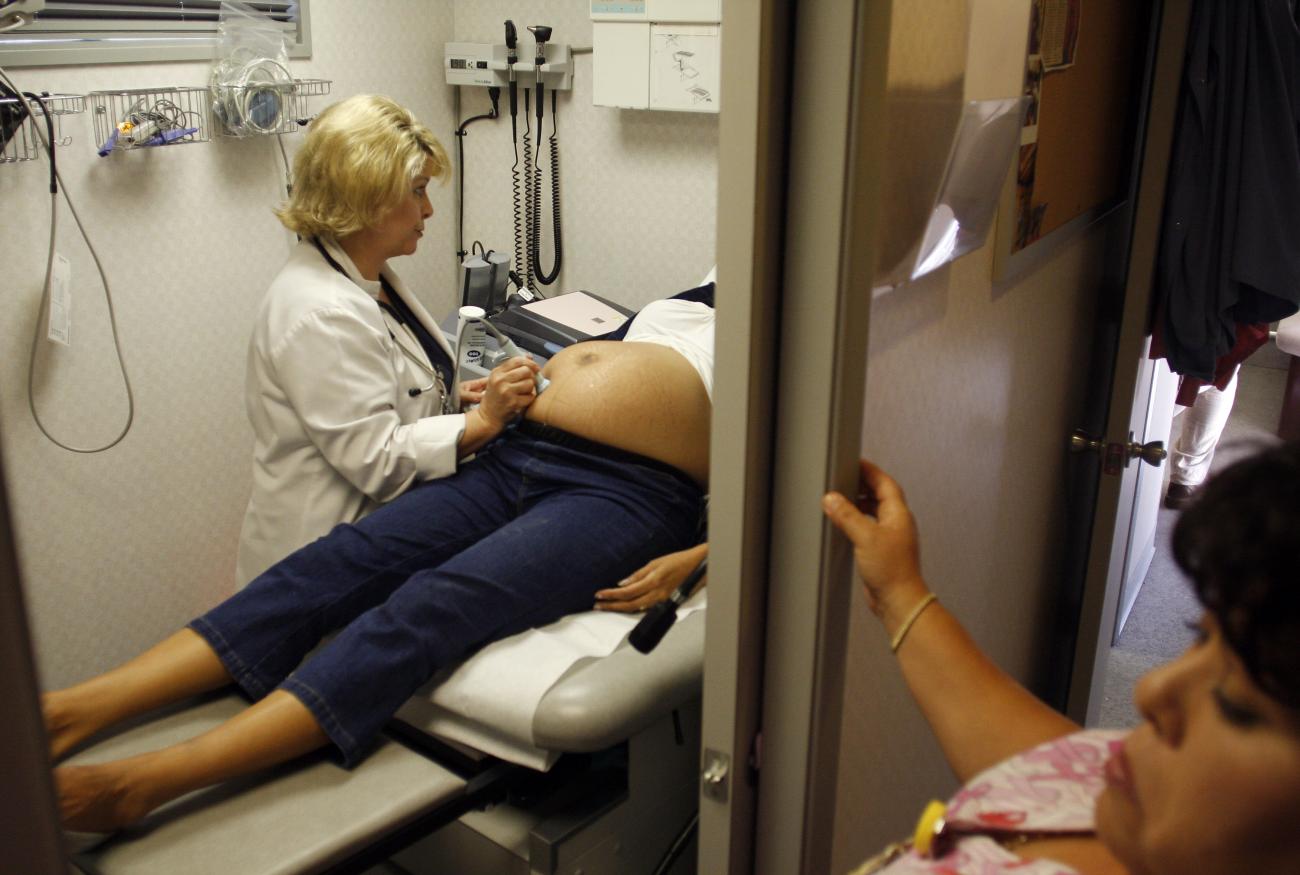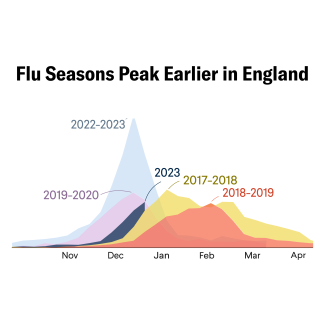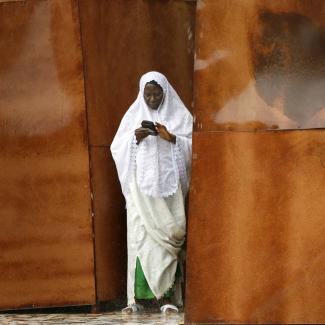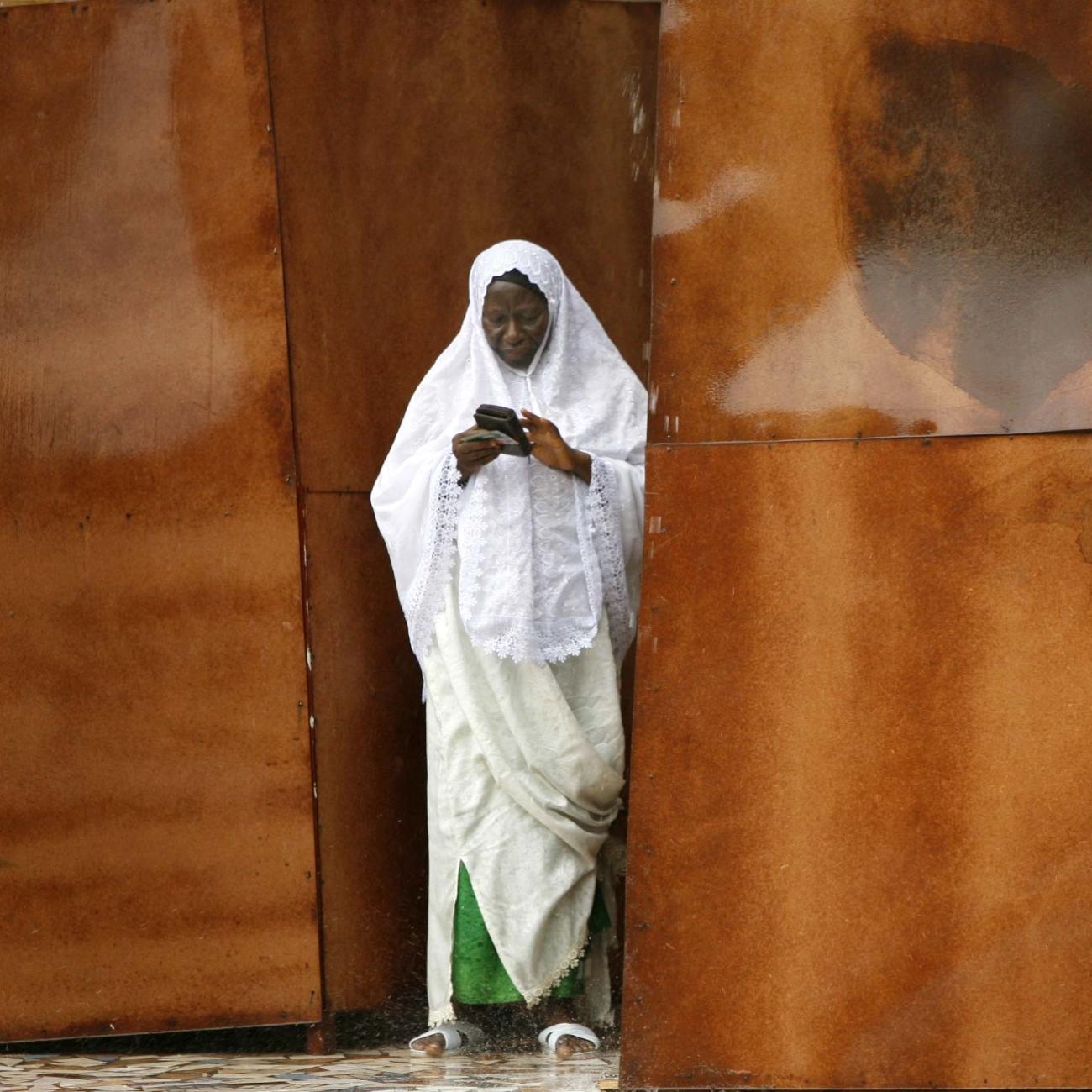The paradox of the American health-care system hits mothers hard. Despite spending the highest percentage of its gross domestic product on health care, the United States continues to have the highest maternal mortality rate among its high-income peers. Although this would seem to indicate a need for greater investment in maternal health, in the past five years, the United States witnessed the closure of more than four hundred maternity units. This has left more than two million reproductive-age women, many of them Black, and those in rural communities with limited access to essential maternal care.
This concerning trend is most recently on full display in Alabama, where three prominent labor and delivery units are set to close by the end of November. Further restricting women's access to care, these closures contribute to the national emergence of “maternity care deserts” — counties entirely without obstetric care facilities, birth centers, and OB/GYN providers. Pregnant mothers in the 36 percent of U.S. counties designated as such deserts find themselves with two choices: to either undertake an arduous journey to seek care or risk an unscheduled delivery in an emergency room.
Closures in Alabama
By the end of November of this year, the maternity units in three major hospitals in Alabama — Monroe County Hospital, Shelby Baptist Medical Center, and Princeton Baptist Medical Center — are set to close. Those closures are on track to leave approximately 1.5 million people in Shelby and Monroe Counties without any birthing facilities, exacerbating the existing maternal health-care challenges in a state that already ranks third-highest in the country on maternal mortality.
Despite an enduring need for maternal care in these counties, several factors drive the closures. Discussing the Princeton Baptist Medical Center and Shelby Baptist Medical Center, Dr. Don Williamson, president of the Alabama Hospital Association, highlighted issues such as staffing challenges and financial strains, particularly from treating uninsured patients. Across maternity care deserts nationally, more than two-thirds are considered to have a “high proportion,” over 10 percent, of uninsured women. Additionally, in such counties, a higher percentage of women depend on Medicaid, which offers reimbursement rates that rarely cover the entire cost of childbirth services. In Monroe County, for example, 32 percent of Alabama residents qualify for Medicaid, making it financially challenging to sustain these procedures. In tandem with other insurance-related issues, Alabama hospitals have incurred losses of more than $1 billion in the past three years.
Beyond financial challenges, another factor affecting staffing difficulties nationally is the changing legal landscape following the June 2023 Supreme Court decision to overturn Roe v. Wade. In the fourteen states that have since enacted total abortion bans, which include Alabama, doctors have cited confusion over legal exceptions for rape, incest, or life-threatening pregnancies, placing them at risk of prosecution. In combination with fewer opportunities to practice care, this pressure has led OB/GYNs to leave their positions for other states as well as discouraged medical students in those states from training in obstetrics.
Just this month, Bonner Health Hospital in Sandpoint, Idaho, a rural medical center, also decided to close its maternity unit. Explicitly citing Idaho’s “political climate,” the hospital’s announcement made a subtle nod to the state’s recent stringent abortion restrictions. In the twenty-four states currently with abortion restrictions, many of which already have difficulty recruiting providers to rural areas, this trend poses a significant threat to maternal health-care access, and federal projections forecast a growth supply shortage of OB/GYNS through 2035.

As in other states, Alabama’s most recent closures disproportionately affect women in rural communities. The closure of Monroe County Hospital, a county already designated as a maternity care desert, will dramatically increase the travel time required for women to access maternity care services. After the unit closes, expecting mothers will need to drive more than an hour to get to the nearest clinics, which are in Montgomery (one hundred miles away), and Mobile (eighty-nine miles).
Beyond the headache of hours spent in the car, extended travel to health-care facilities can raise the health risks for pregnant women, leading to insufficient prenatal care, higher maternal morbidity rates, and increased adverse outcomes for infants. In situations where complications arise, seeking care at a distant facility is not a practical option, and the absence of nearby birth centers leads to an increase in out-of-hospital and preterm births, and even an elevated risk of maternal mortality within a year postpartum.
The shutdown of labor and delivery units in rural counties is growing nationally. In 2020, the American Hospital Association reported that roughly half of rural community hospitals in the United States did not provide obstetrics care. A study conducted before the pandemic involving hospital administrators paints a grim picture for the future. Around 20 percent of these administrators expected their facilities to stop providing labor and delivery services within the next five years.
Examining Racial Disparities
Extended travel times to maternity care due to these closures are also expected to exacerbate the state's and nation’s existing racial disparities in maternal health. According to Health Resources and Services Administration data analyzed by maternal health-care nonprofit March of Dimes, one in five Black women did not receive “adequate prenatal care” in 2020 relative to one in ten white women. Having the highest maternal mortality rates of all racial and ethnic groups, Black women are three times more likely to die from a pregnancy-related issue than white women, and Black mothers in Alabama are twice as likely to die during childbirth.
As map 1 makes clear, forty-one counties in the state have already been identified as maternity care deserts, and an additional twenty-eight counties are categorized as having “limited access to health-care services.” These regions are predominantly concentrated in the western and southwestern parts of Alabama, known as the rural Black Belt. Map 2 illustrates how Alabama’s maternity care deserts align with the areas of highest Black population concentrations.
Monroe County Hospital, depicted in map 2, is located in a county that both is rural and has a high (42 percent) Black population. The closure of the hospital’s labor and delivery unit reflects the compounded challenges faced by rural communities, especially those with substantial minority populations.
The maternal unit closures at Princeton Baptist Medical Center in Birmingham and Shelby Baptist Center in Shelby County present two additional obstacles to maternal care for Black women in the state’s more urban populations. Approximately three-quarters of Birmingham’s population identify as Black, and Shelby County has the seventh-highest percentage of Black residents. The closures of the Princeton Center and the Shelby Baptist Center mean that yet two more counties, primarily inhabited by Black residents, face limited access to maternity units.
As maternal mortality rates for Black mothers in Alabama and nationwide increase from pre-pandemic years, hospital obstetric unit closures continue to be concentrated in rural counties with a high percentage of Black and low-income residents. In 2020, one in twelve birthing people lived in a maternity care desert and one in six Black babies were born in maternity care deserts, a disparity on track to broaden.
Addressing Inequities in Maternal Care
In acknowledgment of the state’s disparities in maternal health-care access, this past January, Alabama took a noteworthy step toward addressing maternal health disparities by securing approval from the Centers for Medicare and Medicaid Services (CMS) to extend Medicaid postpartum coverage from sixty days to a full year after childbirth.
Although federal law mandates sixty days of Medicaid coverage for pregnancy-related care after childbirth, many postpartum individuals, particularly those in states without Medicaid expansion, face a coverage gap once this initial period expires. Alabama’s recent extension begins to support maternal well-being, as the postpartum coverage period is critical for recovery, managing complications, infant care, and transitioning to primary care. As of November 2023, thirty-eight states have secured approval to extend Medicaid to a full year.
Although the coverage for postpartum care is a positive development for promoting maternal health equity, as closures continue, expanding coverage to the high proportion of Medicaid-eligible women in maternity care deserts is just one piece of the solution. Organizations such as Georgetown’s Center for Children and Families and the Alabama-based NGO Alabama Arise emphasize the urgent need to close the Medicaid coverage gap in Alabama for adults with low incomes to effectively address increasing rates of maternal mortality.
One in twelve birthing people lived in a maternity care desert and one in six Black babies were born in maternity care deserts
Alabama’s Medicaid eligibility criteria are relatively restrictive relative to other states. Estimates vary, but approximately three hundred thousand individuals would become eligible if the state were to accept federal funding for expanding Medicaid access under the Affordable Care Act. In states that have expanded Medicaid, the increase in health-care coverage among women of reproductive age has been significant. This expansion has improved their access to essential preconception and prenatal services, which are crucial for ensuring the safety and well-being of both mother and baby during pregnancy and childbirth. Conversely, in the twelve states that have decided not to expand Medicaid to include adults with incomes below 138 percent of the poverty line, including Alabama, the uninsured and maternal mortality rates among women of reproductive age are notably higher.
In addition to providing more low-income women with affordable access to prenatal care, expanding coverage could lead to increased reimbursement for hospitals from a broader pool of insured patients. With more patients covered for an extended period, hospitals would see more consistent funding, strengthening the financial stability of rural hospitals and potentially reducing the closure of obstetric units in the state.
The potential advantages of extending coverage, such as higher reimbursements and increased financial stability for hospitals, offer a glimpse of hope in addressing the maternal health-care crisis. However, despite continued advocacy by health-care providers, Medicaid expansion in Alabama faces persistent political challenges in passing.
As Alabama faces the closure of maternity units, a broader national issue comes into sharp focus. The United States, despite its significant health-care spending, continues to struggle with growing maternal mortality rates and the emergence of maternity care deserts. This trend calls for urgent attention and action to ensure that mothers across the nation receive the essential care they need during one of the most critical times of their lives, regardless of their racial, geographic, and insurance status.



